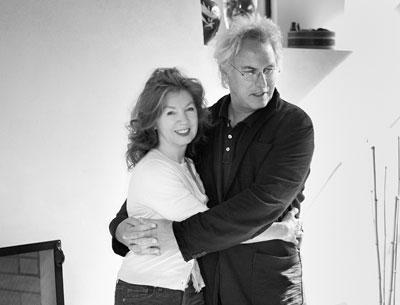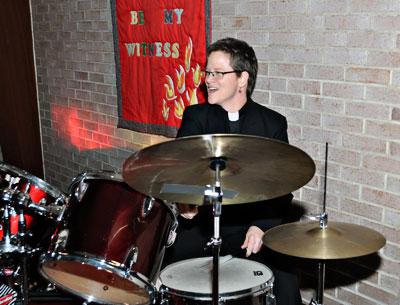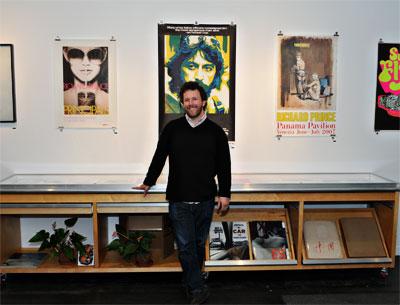Music From the Happy House
Music From the Happy House

“I went down to Alphabet City a few weekends ago, saw a guy walking with a guitar, felt like this was a bygone era.”
That may sound like the opening lines of a song — and maybe it is — but in this context, Jamie Grubb, a Springs native, was musing about the state of rock ’n’ roll music, circa 2013.
“There are no new, 25-year-old, not-so-much-money musicians moving to the East Village. It’s too expensive,” he said.
Though some parts of New York City are still crawling with musicians, the pioneering artists in Brooklyn neighborhoods like Williamsburg were long ago pushed out by gentrification and commensurate skyrocketing real estate costs. And while Brooklyn’s Dumbo neighborhood has experienced a similarly dramatic transformation, it also serves as headquarters and inspiration for Mr. Grubb’s band, the Dumbo Project.
“We were all side people in other bands,” Mr. Grubb said of the group’s inception. “We had all played together in various bands. We got this rehearsal space in Dumbo, and we didn’t have a name, so we said, ‘How about the Dumbo Project?’ ”
Formed in 2009, the band, which also includes Drew Burchenal, John Schmidt, Alex Rivers, and Meredith Strang O’Sullivan, convenes at a huge, subterranean complex of rehearsal and recording studios at 68 Jay Street. In a shared space known as Happy House, the band cooks up a unique blend of original music that incorporates rock ’n’ roll, blues, punk, and soul.
Last year, the Dumbo Project performed for “On the Air” at Crossroads Music in Amagansett, roughly coinciding with the release of their debut EP, “Panacea,” recorded in Manhattan’s Alphabet City. The band has also performed at the Dumbo Arts Festival and various New York clubs. Today, they continue to play in and around New York and are plotting more recording dates, with a full-length release to follow.
There is a curious paradox at this time in popular music’s history. The major-label infrastructure is a shadow of its former self, after a decade-plus decimation by online piracy and competition from new media including video games, social media, and a trillion-plus Web sites. Artist development is long gone, rosters are lean, recording and promotional budgets leaner, and attention spans almost nonexistent. The paradigm that existed for decades is unlikely to return.
Yet, the very means by which that traditional path to stardom was destroyed — broadly speaking, the personal computer — also allows the independent artist unprecedented opportunity for do-it-yourself recording, promotion, and worldwide distribution. The Dumbo Project has seized on this: “Panacea” is available for purchase on Apple’s iTunes Music Store and streaming at reverbnation.com/thedumboproject. A video for their song “Dumplings and Creamsicles” is at youtube.com, and the band has a page on Facebook at facebook.com/TheDumboProject.
“It’s like the press kit you used to send out manually,” Mr. Grubb said of Web sites like reverbnation.com. In this way, a band can build an audience even as live-music venues become harder to find, more victims of the real estate boom that claimed so many clubs and studios in recent years. “If you have a Facebook page, you post the gig information and people might show up. You don’t even talk to them on a regular basis.”
After a November performance in Brooklyn, Mr. Grubb said, “we had 10 new ‘likes’ on Facebook and we don’t even know half of them. We don’t know where they’re coming from. They’re starting to play our songs on Spotify,” he added, referring to the on-demand digital music service that features more than 20 million recordings.
There is another paradox more and more musicians confront with the passage of time: playing rock ’n’ roll, a form built on youthful rebellion and irreverence, beyond one’s youth. “Is rock ’n’ roll tied to age?” Mr. Grubb pondered. “Or, if your music is good, it’s good, period? Guitar players just get better, you know? If you’re 50, you’re probably better than when you were 20. But they think the market wants the 20-year-old, even though that 50-year-old can blow away the 20-year-old. You’ve got to find an audience for it.”
Perhaps, in the rock ’n’ roll world, the youth-versus-age conflict has been settled, anyway. Sixty-nine-year-old Mick Jagger pranced across a Brooklyn stage just a few weeks ago, after all. In that same borough, the collaborative Dumbo Project — its members are multi-instrumentalists and musical ideas from all corners are welcome — forges forward.
“There’s just some drive to keep writing, and it doesn’t stop,” said Mr. Grubb. “You just want to continue to play and try and do something better the next time.”







